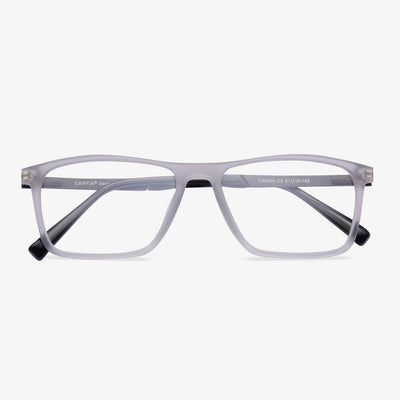Tortoiseshell glasses are abundant in variety.
Tortoiseshell glasses frame is quite rich in color. Black, brown, light gold, and other colors are covered, with black spots scattered at random distribution. The overall color is dark. Regardless of men and women, it will add a noble and steady feeling to the wearer. For many people, today's tortoiseshell glasses wear, is not only for the pursuit of its own comfort. It is more as a kind of decoration, showing their extraordinary taste.
Overnight Glasses
Overnight Glasses is created by experienced members of the optical industry. You'll get high-priced lenses, coatings, and prescription glasses approved by the FOOD and Drug Administration (FDA) and the American National Standards Institute (ANSI).
Production, inspection, and customer support are all done by certified opticians in the US with 100% accuracy. Freeform Progressives Lenses designed by Seiko, Transitions Lenses, Trivex Trilogy, Nu Polar Polarized films, even the most basic prescriptions for monopod lenses, are manufactured, assembled, and double-checked in the United States by their certified personnel. The inventory includes prescription glasses and prescription sunglasses from well-known brands such as Ray-Ban, Oakley, Dior, Versace, Salvatore Ferragamo, Dolce and Gabbana (D&G), Prada, Tom-Ford,Burberry Eyewear, and Ermenegildo Zegna are both priced at less than half what other retailers offer.
How to test a blue-light lens?
Blue light-blocking glasses have many membrane layers, and all kinds of colors of the film are not the same. Actually, the membrane layer of anti-radiation effects is not large but has high strength and chemical resistance of lining norm of glasses and the effect of protection for the eyes is very important.
Who should wear blue light glasses?
Teenagers, middle-aged and old people need to wear blue light glasses. The lens of a teenager is clear, pure, and still developing. Their eyes are less resistant to blue light than adults and are more vulnerable to long-term exposure to blue light, which can promote the development of myopia. Teenagers study more nervous, are free to love to play computer games, love to watch TV programs. Blue light damage can be said to be everywhere. As a result, teenagers are among the biggest victims of blue light. Macular degeneration is a common disease in the elderly, usually occurring after the age of 45, and the incidence increases with age. Blue light can accelerate the progression of macular degeneration, especially in patients following cataract surgery. Blue-blocking glasses are still the best preventative measure.
Orthokeratology lens
Orthokeratology lenses appeared in the United States in the 1960s and became mature in the 1980s. In 1996, Taiwan first imported the product, and it entered mainland China the following year. It is called OK lens for short because of its pronunciation. After OK lens entered China, it was immediately found by businessmen. A lot of institutions and individuals who do not have the relevant qualifications have flooded into the operation of the OK lens. On July 5, 2001, the State Food and Drug Administration formulated the Regulations on the Supervision and Administration of the Operation, Inspection and Matching of Orthokeratology Lens, which regulated the operating institutions and testing and matching institutions of Orthokeratology lenses. But in China, the rule did not change the course of events.
Standard vs Premium Progressive Lenses: What Are Their Differences
In the above part, we have introduced some basic information about standard and premium progressive lenses. So, what are their differences? In this section, we will show them.
Compared with premium progressive lenses, standard progressive lenses require large frames. Otherwise, you will limit your near vision. On the contrary, if you prefer small and less noticeable frames, premium progressive lenses are the better choice.
Compared with premium progressive lenses, standard progressive lenses are cheaper. For most people, standard lenses are affordable.
Compared with premium progressive lenses, standard progressive lenses are suitable for most people including children.
Premium progressive lenses are customized to your eyes and offer a wider viewing area than standard lenses.
Progressive Lens
Standard progressive lenses are multifocal lenses with three observation areas, farsightedness, intermediate vision, and nearsightedness. Unlike bifocals, there are no visible lines between each viewing area. They have a seamless, invisible design, where the optical power changes 'gradually' throughout the lens. Many people confuse 'bifocal' or 'trifocal' with 'progressive' but remember that bifocals and trifocals have visible lines in the lens, while progressive lenses do not. Because progressive lenses have no lines in the lens, they are more popular multifocal lenses than bifocal lenses.
The main observation area of the progressive lens is a far distance, the smaller area at the bottom of the lens is used for myopia, and the middle area in the middle is smaller. Standard progressive glasses are very suitable for general purpose glasses, focusing on hyperopia activities (such as driving and walking) and sufficient area in the lenses for nearsighted activities (such as reading and computer use). The left and right sides or 'convex corners' of the lens are deliberately blurred to achieve an invisible design. The clearest line of sight in the gradual process is from the center to the top of the lens.


















































